There are many reasons to eat more food that didn’t come from a supermarket, restaurant or convenience store. For example, when we personally harvest more of what we eat, we can be a little more self-reliant during uncertain times. We can also make more choices that protect our natural resources. By eating vegetables grown organically in our own yards, we eliminate the need to burn fossil fuels in order to bring those greens to our table, and we reduce the amount of pesticide and fertilizer that ends up polluting our water. When we grill local venison instead of a traditional steak, we know that animal was not raised with antibiotics that are contributing to a public health crisis. When we buy from a nearby producer instead of from an industrial farm 1,000 miles away, we are using our dollars to support more sustainable practices.
The COVID-19 pandemic uncovered big weaknesses in America’s food system. At times, grocery store shelves have been empty of produce, meat or dairy, while the closure of meat packing plants and food processing facilities meant some farmers were stuck with crops or livestock they couldn’t sell. Americans are looking for ways to find healthy, fresh food, and the more of us who seek out these opportunities the more resilient our families and our food system will become.
Grow a Garden
People have fed themselves from small gardens since time immemorial. Today, some serious gardeners are producing all the veggies their households can eat, even on tiny lots in cold climates. That’s not realistic for many of us, but even more casual gardening has its rewards: Few things compare to enjoying berries right off the bush steps from your own door or serving up a meal garnished with herbs you grew yourself and harvested minutes ago.
That type of gardening doesn’t require large amounts of land, expensive equipment or years of experience. Here’s one way to get started with materials you probably already have.
Build a Lasagna Garden
A lasagna garden is a type of raised bed built in layers that creates rich soil, conserves water and prevents weeds. Typically, you’d start building one in late summer or early fall, but it’s never too late if the ground is workable.
First, decide what you’ll grow and pick a level spot that is large enough to accommodate your full-sized plants. You’ll want to look for a location that receives at least six hours of full sun every day, has a readily available water source, provides space to move between the rows and receives foot traffic (it’s easier to take care of your garden if it’s in a spot you frequently traverse).
Green
- grass and plant clippings (no herbicides)
- coffee grounds
- paper filters
- tea leaves/bags (no staples
- composted manure
- cut flowers/houseplants
- composted food scraps
- Leafgro
- topsoil
Brown
- shredded leaves
- pine needles
- straw
- old potting soil
- shredded paper
- paper towels/napkins
-Heather Zindash
Mow or cut all the vegetation in the area as low as possible and loosen the soil beneath to support drainage. Cover the ground with 6-8 overlapping sheets of newspaper or a sheet of cardboard to kill the grass or weeds underneath (avoid coated cardboard or glossy paper in order to encourage earthworm growth). Wet the newspaper or cardboard thoroughly.
Now you’re ready for the lasagna layers: green (nitrogen-rich) material and brown (carbon-rich) material (see sidebar). Build your layers inside some rot-resistant wood to keep it contained. Apply a few inches of green material, followed by a similar layer of brown. Continue layering until your bed is 12-24 inches high. As the bed decomposes, you can add more layers. Top your lasagna with a layer of topsoil and compost; you can plant a cover crop in the fall to reduce erosion. Be sure to keep the bed moist, but not wet.
In the spring your lasagna garden’s rich soil will be ready for planting. You can either buy seeds or seedlings from your favorite source or maybe you can get some for free from a gardening neighbor. Plant directly into your lasagna garden, and add a little organic mulch around your plants to further discourage weeds and help the soil hold water. From here, maintain the bed just like any other garden and enjoy the fruits of your labors!
Go Hunting
Even before humans were growing their own crops, they secured food by hunting animals and utilizing the meat they harvested. That tradition continues today, and about 11.5 million Americans still take to the field to hunt every year. While there are probably just as many motivations for hunting as there are hunters, acquiring food consistently ranks at the top of motivations listed by sportsmen and women when they’re asked why they hunt. In fact, growing interest in locavore (a person who eats food grown locally whenever possible) movements has increased hunting participation for adults who have begun hunting despite never having been exposed to it as children.
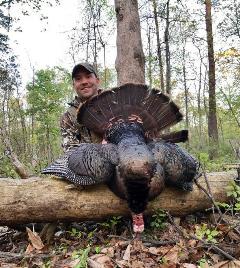 Jared Mott adds a wild turkey to his freezer.
Jared Mott adds a wild turkey to his freezer.
Since the quarantine associated with the coronavirus began in March, my wife and I (Jared) have not had to buy red meat from the grocery store and have completely avoided protein scarcity as supply chains began to strain. We were able to do this because our freezer was already well-stocked with wild meat I had harvested during the fall and winter. We have been enjoying wild game without having to stress about the availability of beef, pork or lamb at the store. Venison has made up most of our menu, but we’ve also supplemented that with wild turkey and waterfowl as well.
Getting Started
Hunting can be very accessible with a little research and effort. Even if you can’t or don’t want to eliminate store-bought meat from your diet, a deer or two in the freezer can tide you over during times of supply chain troubles like the ones that emerged in the early days of the coronavirus public health crisis.
No matter where you live, wild game is likely abundant nearby. Whitetail deer have become so ubiquitous that they can be hunted in many neighborhoods and suburbs in the eastern part of the country. Chances are high that a huntable population of deer can be found within an easy drive from your home. Small game, like squirrels and rabbits, are also abundant and often access to private land is easier to secure to hunt smaller game than asking to hunt deer or elk.
In order to get started hunting, there are some steps you’ll have to take before you take to the woods. You will need to complete a Hunter Education Course and buy a hunting license. Your state fish and wildlife management agency will have all the information you need to find a course, sign up and attend. You can also go to www.hunter-ed.com and look for courses in your state.
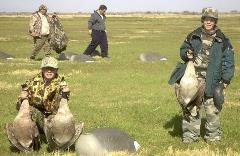 A successful goose hunt.
A successful goose hunt.
When you have completed Hunter Education and bought a license, you’ll need a place to hunt once the season begins. Even if you don’t have access to private land, all states provide some public hunting opportunities. You’ll be able to see those on your state wildlife management agency’s website. But don’t be afraid to ask for permission to hunt on private land if you know the owner or even if you don’t. Permission to hunt thousands of acres of private land is given after a knock on the door, a quick introduction and a polite request to hunt. If you’re not afraid of being told no, identifying owners of private properties and asking for permission to hunt is a great way to get access to some fantastic hunting.
Remember, the goal of securing your own wild game meat by hunting it will be more rewarding if you enjoy each step of the journey. You will go on many more hunts that result in no shots than hunts ending with a kill. Always learn from your mistakes and apply your knowledge to your next hunt. The time you spend learning about the animals you hunt and the country they live in will be just as awesome a reward as the meat in your freezer.
Hunting Benefits
The obvious benefit of hunting is the acquisition of healthy, lean meat. Wild game is free of unnatural hormones but is rich in nutrients and low in fat and cholesterol. Humans require a certain amount of protein in our diets, and while nearly all foods contain some protein, meat is still one of the best ways to acquire the proteins our bodies need. Wild game, due to a variety of factors like diet and a more nomadic lifestyle, offers a healthier alternative than farmed or ranched meat.
In addition to healthy protein, a hunter benefits from time spent in nature, either alone or with friends and family. Time spent outdoors has been proven to have healthy effects on our bodies and minds, even before we consume the nutrients found in wild game. A hunter has no choice but to undergo bouts of “nature therapy” to supply his freezer.
Finally, hunters contribute to the conservation of our natural resources and this benefit is enjoyed by all of society, not just hunters. Hunters must buy licenses and special tags to legally participate, and the money collected from these fees goes to the agencies that manage our wildlife and other natural resources. In some cases, these state caretakers are funded solely by fees collected from sportsmen and women purchasing licenses. Additionally, hunters pay excise taxes on much of their equipment, especially firearms and ammunition, with the revenue earmarked for conservation purposes.
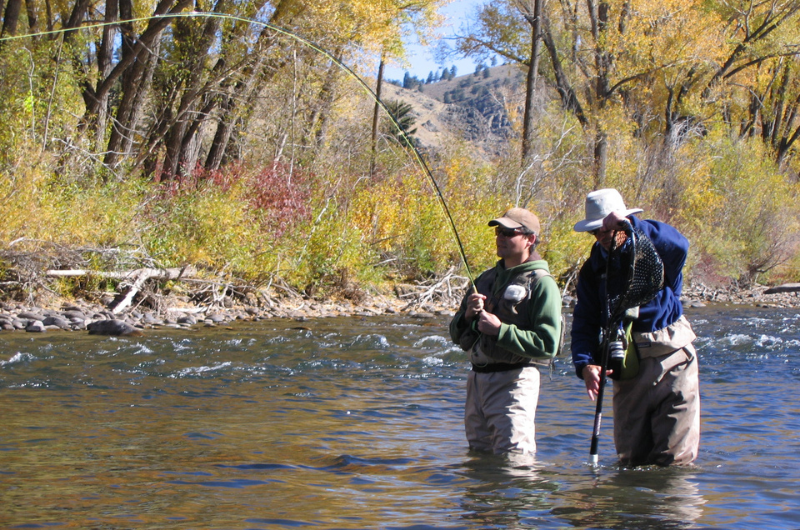
Reel One In
If you live close to a river or lake, fishing can be a fun way to catch the protein you eat. Dieticians recommend Americans eat at least eight ounces of fish or seafood per week because of the many vitamins, healthy fats and minerals they provide.
Fishing can feed your soul, as Izaak Walton noted: "Doubt not but angling will prove to be so pleasant that it will prove to be, like virtue, a reward to itself."
If you are new to angling, make sure to get a fishing license and learn the rules for the size and number of fish you can keep. Your state fish and wildlife agency has that information, as well as information on where you can safely access local rivers and lakes and how to catch the fish in your area. If you plan to catch and eat a lot of fish, you will want to check if there are fish advisories for the lakes you visit. The Environmental Protection Agency has a website that will help you find out whether a state or tribe has issued warnings about the levels of mercury or other toxins in fish that you should know about.
You don’t have to spend a lot on gear to go fishing; a pole, fishing line, hook and worm can get you started. When you do buy fishing gear, a portion of the sales goes to help improve fisheries around the country. Fishing can be great family time or time to be alone with your thoughts. It is also an easy way to introduce a youngster to the joys of being outdoors in nature.
Fishing can feed your soul, as Izaak Walton noted: “Doubt not but angling will prove to be so pleasant that it will prove to be, like virtue, a reward to itself."
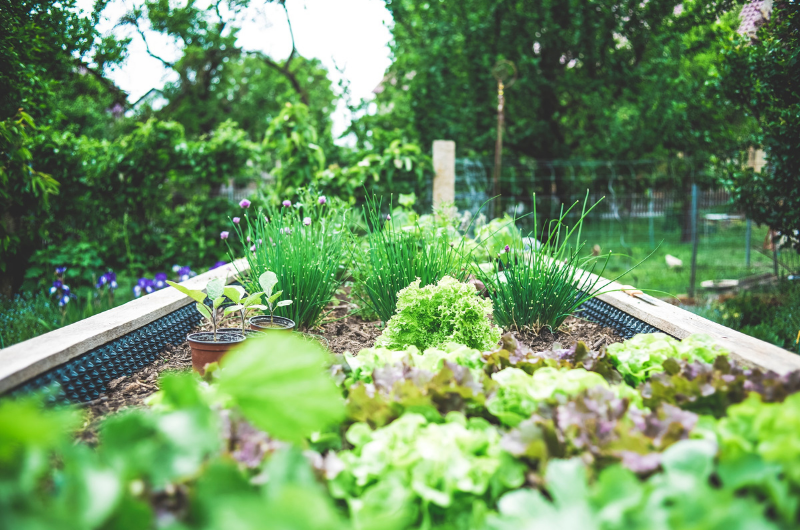
Eat Fresh, Eat Local
Whether or not you hunt, fish or grow your own, there are many other options for finding fresh, local food and many reasons for seeking it out.
“The pandemic has cast a bright light on just how important it is for consumers to buy from local farmers,” said Dena Leibman, executive director of Future Harvest, the Chesapeake Alliance for Sustainable Agriculture. “When our global supply chains broke and grocery shelves lay empty, it was local, small- to mid-scale farmers that fed consumers, including overtaxed food banks. They worked overtime to keep us safely fed and healthy.”
There are more than 8,700 farmers markets listed in the U.S. Department of Agriculture’s National Farmers Market Directory, and the number continues to grow.
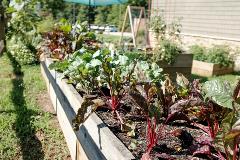
At farmers markets you can find fresh, local fruits, vegetables, meat, dairy, baked goods and specialty products you often cannot find in your local grocery store. You can meet your local farmer and ask them about their practices. Are the fruits and vegetables organic? Are the beef, lamb and dairy products from animals fed a natural diet of fresh grass?
“There is a significant difference between grass-fed meat and grain-fed meat when comparing ruminant animals,” said Kevin Fulton, Nebraska rancher and former collegiate strength coach and weightlifter. “The same can be said for milk and dairy products.” With higher levels of Omega-3 and other fatty acids, Fulton says grass-fed meat and dairy products are healthier than meat and dairy from grain-fed animals.
Community Supported Agriculture (CSA) is another option for buying healthy, local food. These CSAs operate like a buying club. Customers purchase a subscription direct from the farmer, typically for a weekly delivery of fresh food. The food they get changes from week to week, depending on what produce is in season, what is growing well and what they choose to buy.
For families, pick-your-own farms are a fun way to get fresh fruit, spend time together outdoors, and teach your kids how food is grown.
For Leibman, buying from local farmers isn’t just about getting fresh, healthy food. “We can never be in this food insecure position again,” she said. “Consumers must continue buying direct from their farmers. Together, we need to work toward creating resilient, crisis-ready regional food systems across America.”
For Fulton, the benefits are personal. “Grass-fed products are better for your health and the environment. [They also benefit] the animals and independent family farmers. What’s not to like about that?”
Whether it’s backyard gardening, hunting, fishing or buying from a CSA, eating locally grown meat and vegetables is better for your physical, financial and planetary health.
Learn more about hunting